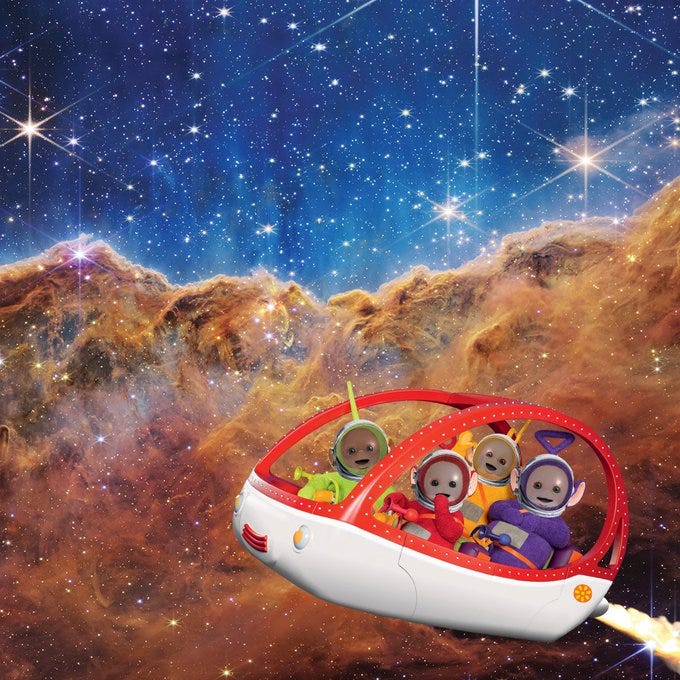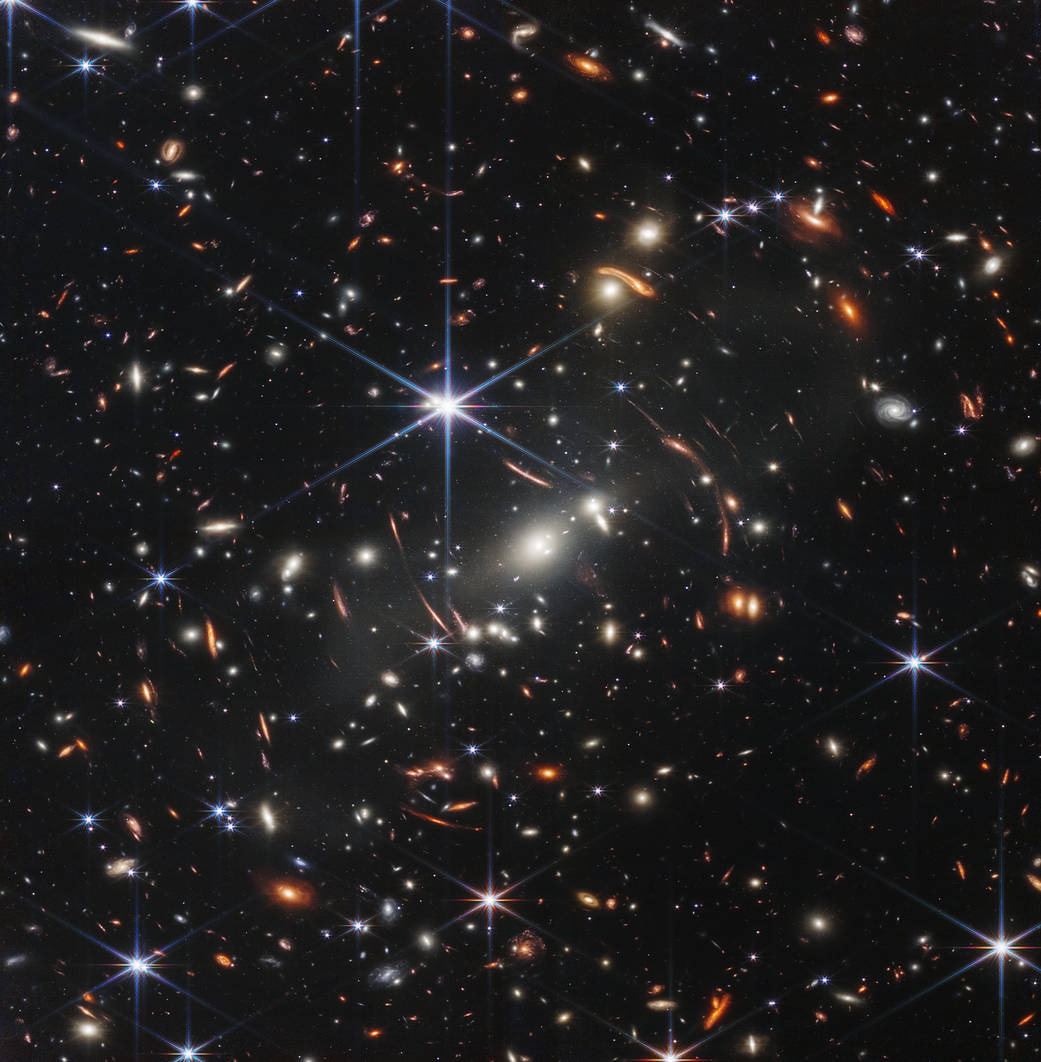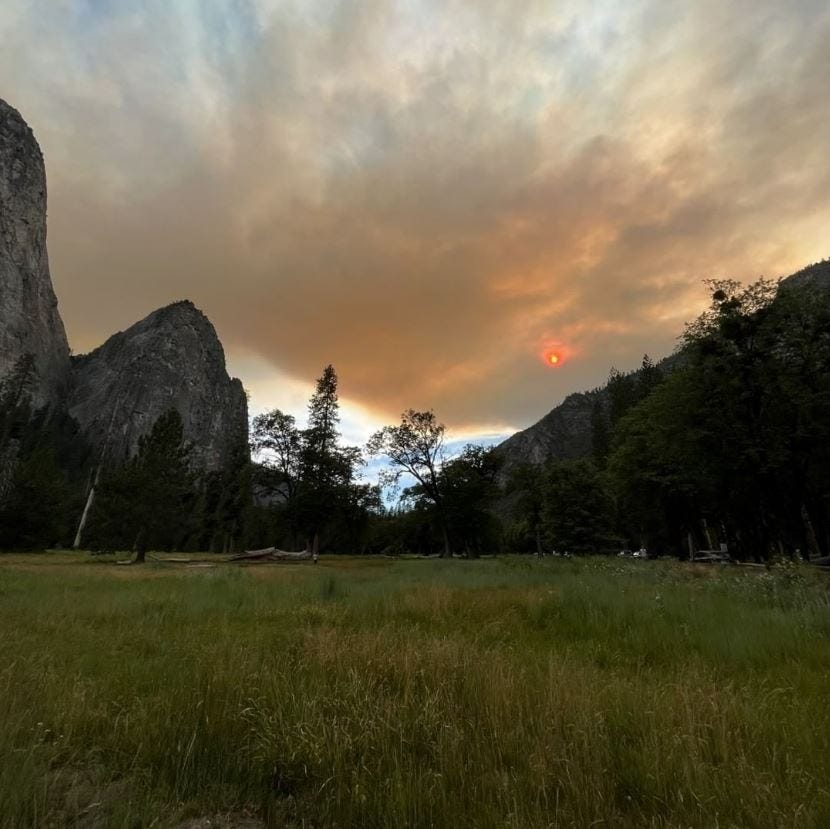This week, news outlets were awash with the first images from the James Webb Space Telescope. Politicians, celebrities, and captains of industry all fawned publicly over the pics. They were projected on jumbotrons in the middle of Times Square. Hell, even the Teletubbies got in on the action. (I honestly didn’t even know they were still a thing.)

Personally, I don’t get all the public interest. Only the most ardent space enthusiasts have the contextual knowledge needed to truly appreciate what the images represent. But for the lay observer, they are complete abstractions along the lines of a Jackson Pollock painting. Each image is really just a nonsensical, twinkling mishmash of smudgy colorful dots. The trippy, acid-inspired black light posters you find at your local head shop probably make more sense. Well, most of them anyway.
Don’t get me wrong: I completely admire the technical prowess and sustained persistence needed to bring this engineering marvel to fruition. The project was in development for 25 years, and represents an investment of over 10 billion dollars. And I have absolutely no doubt these and future images are going to greatly expand the breadth of our celestial knowledge.
But the photos provide only vicarious glimpses of currently unreachable worlds that are frankly of no consequence to those presently living, nor likely for at least seven generations thereafter. For the foreseeable future, they are purely an academic pursuit. So I struggle to understand the mindset behind such widespread fanfare among the general public.

Psychology tells us we generally pay greatest attention to what is nearest us in time and space. That certainly makes sense evolutionarily. Our paleolithic ancestors, for example, would have been easy prey had they spent their time gazing wistfully skyward hoping to catch glimpse of passing Teletubbies. Thousands of years of history have hard-wired us to forgo distant concerns in favor of what is most proximate.
So shouldn’t dazzling, Earth-bound imagery—infinitely closer to our daily experience—receive at least commensurate coverage, if not more? Shouldn’t photographers who brilliantly expose the mysteries of our deepest oceans be showered with similar praise? When skilled macrophotography reveals the true intricacies and textures of nature, shouldn’t we be similarly impressed? And when stark photos reveal our planet in crisis, shouldn’t we have an incentive to pay equal—or greater—attention?

Images from our own planet have far greater potential to impart knowledge of consequence here and now. Photos from our own world bear witness to places we could possibly visit within our lifetimes. Pictures anchored in our shared human experience tug mightily at our heartstrings, inspiring happiness, curiosity, and hope.
Then again, photos of Earth sometimes hold a mirror in which we are unfavorably reflected. Some expose despairing realities; others, past indiscretions. Some remind us of heinous crimes; others, failures of justice. Some are calls to action; others, virtually paralyze. Images of our world necessarily carry some baggage.
There, then, is perhaps the difference I’ve been looking for. Our celestial voyeurism elicits no pangs of conscience. We’ve not yet committed serious transgressions in the broader cosmos, so peering into the far reaches of the universe is—so far—guilt free. Casting European eyes upon the edge of a “newly discovered” continent from the straits of a nearby coast was equally innocent at one point.
We are happy to gush publicly over pretty pictures of distant places precisely because they demand no emotional toll from those doing the gushing. That will change, so you might as well enjoy it while it lasts. Just be sure to look down once in a while at what’s really important.
Subscribe to have updates sent directly to your inbox, or connect with Noon at the Park on Twitter, Instagram and Facebook.
Voiceover music by Coma-Media from Pixabay




